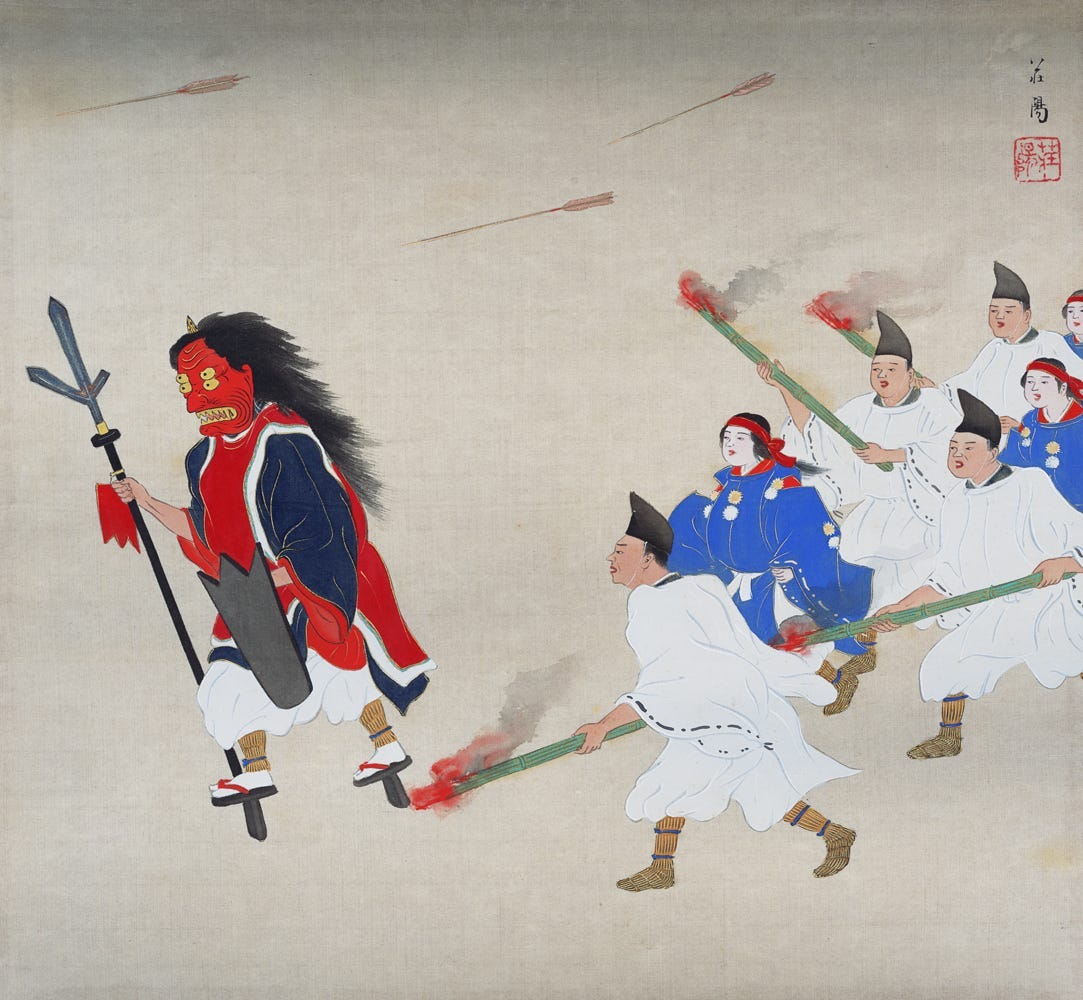Sorting for my shower on February 2, 2025, my wife and daughter start throwing roasted soybeans at me. I was not expecting it at all!
However, they weren’t trying to punish me for something I had done, and they weren’t going crazy. They were celebrating what the Japanese call Setsubun 節分.
Setsubun is a traditional Japanese event marking the transition from winter to spring, celebrated on the eve of Risshun (立春), the first day of spring according to the lunar calendar (in early February).
The centerpiece of Setsubun celebrations is called mamemaki (豆撒き), or bean throwing. Participants scatter roasted soybeans (fukumame 福豆 or “lucky beans”) while chanting “Oni wa soto! Fuku wa uchi!” 鬼は外、福は内(“Demons out! Fortune in!”) to drive away evil spirits (Oni) and invite prosperity. There are also children’s songs on this theme.
This ritual is performed in homes, temples, and shrines. At home, a family member often wears an Oni mask to represent the demon, making the activity especially appealing (but sometimes frightening) to children.
Afterwards, people eat a number of roasted soybeans equal to their age to ensure health and longevity. The beans are believed to purify the room and protect against illness and misfortune.
The origin of Setsubun can be traced back to ancient China. The main part is called Tsuina (追儺) and was introduced to Japan in the 8th century. Tsuina was a court ceremony held on the last day of the year according to the lunar-solar calendar to exorcise evil spirits believed to bring misfortune and disease.

Setsubun is celebrated throughout Japan. It is especially important in the culture and folklore of Kyōto. Although it is celebrated in many places here, the most important are Yoshida Shrine, Yasaka Shrine, Mibu Shrine, and Kitano Tenmangu Shrine.
In these shrines, not only are mamemaki performed, but many festivities are held, including Maiko dancing. Below are some other videos (in Japanese) that will give you a good idea of these festivities.
Thanks for reading. If you want to read more about Japanese culture, I regularly write articles that are collected here: Japanese Culture. To read them all, you can become a paid subscriber. This will give you access to all my Substack as well.




